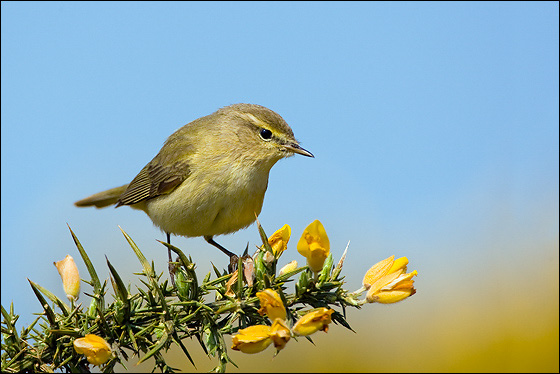Common Chiffchaff (Phylloscopus collybita)
As a rule, the Chiffchaff is more of a woodland bird than its very similar relative the Willow Warbler. It tends to occupy mature lowland woodland with an open canopy and healthily copious understorey. Throughout most of its range it prefers deciduous woodland, but it is no stranger to coniferous forest in places, so long as there are some broad-leaved trees as well. Riverine forest is often densely occupied, and in Central Europe this species has a strong attachment to cemeteries and parks.
The Chiffchaff’s habitat requirements of open canopy and rich, but not stifling understorey reflect a remarkable distinction between the two sexes. Almost everywhere it occurs, the Chiffchaff seems to allocate the canopy to the male and the understorey to the female, where they respectively live most of the time. The bond between the sexes is not very strong, and they effectively live “in different houses”. They seem to meet largely for display purposes and at the nest when they are feeding young.
The male Chiffchaff, though, is often a real slouch when it comes to parenting. His contribution to feeding the chicks varies between an even share and almost nothing. It seems that most females are perfectly capable of looking after the young themselves and the pair-bond often splits at this time, or even before. Despite the lukewarm relationship, male Chiffchaffs seem to be strangely reluctant to acquire more than one mate, despite ample opportunity.
The female’s low level life includes building a domed nest just above the ground, or upon it. It is always carefully concealed in tall vegetation, and is also made up from inconspicuous materials such as dried grass, moss and various leaves. Interestingly, when a female builds its second nest of the year for another brood, it often places it higher up than the first.
The Chiffchaff is a migrant, wintering in Southern Europe down to West Africa, with a few individuals braving conditions further north. In the northern parts of its range it is often one of the first migrants to appear in spring, from early March onwards.

